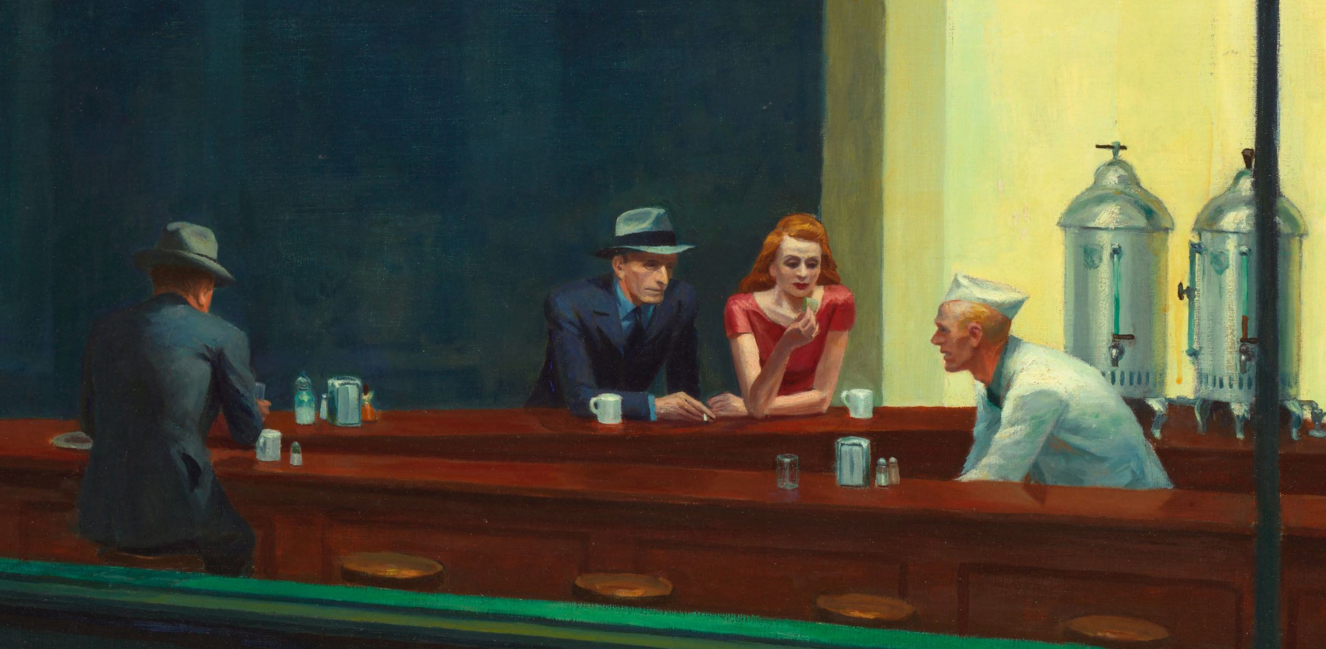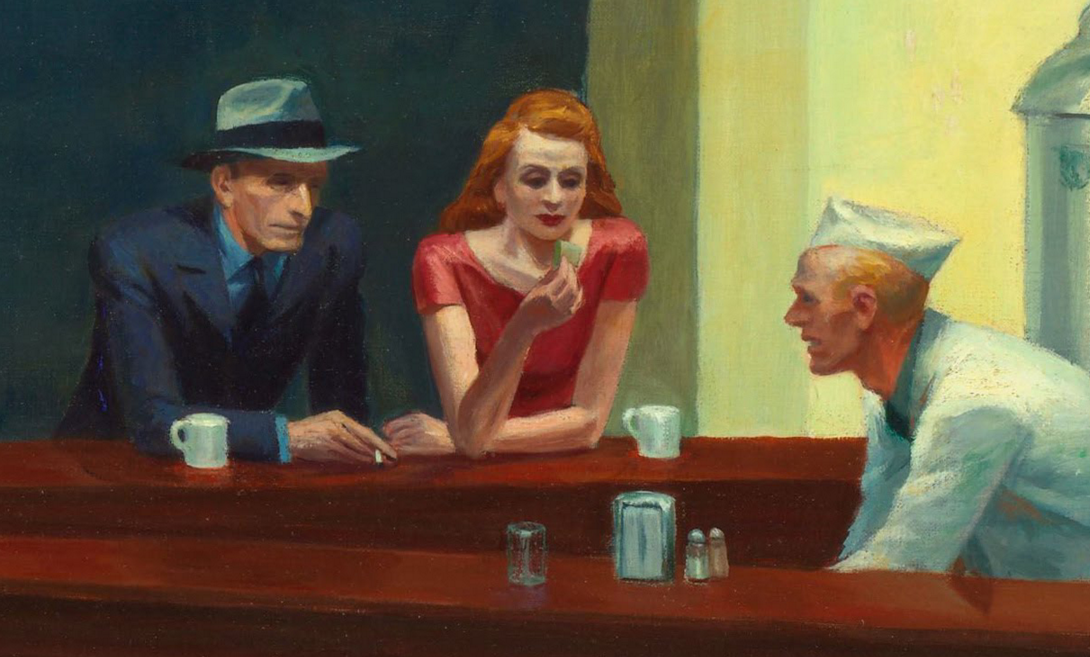|
It's easy to attack and destroy an act of creation. It's a lot more difficult to perform one.
-Chuck Palahniuk
Have other people's comments ever made you want to stop creating art? Do you admire artists who share their drawings or paintings all-the-time and aren't affected by other people's opinions? Ever wondered how much more productive and successful you'd be if you didn't allow other people's opinions to interfere with what you want to achieve in life? Criticism, whether constructive or not, will be a recurring element in any artist's career. The fact of the matter is that, in order to get recognized for our work and make any sort of income from it, we have to constantly put both it and ourselves out there. And, the more we put ourselves out there, the more we open ourselves to others' opinions. It's important to learn not to take things personally, and not allow other people's words to keep us from producing the work we want to be creating. Realize that, no matter how skilled or well-intentioned someone is, there will always be people that do not agree with him/her. And also realize, that it's not your job to get everyone to like your work. It is your job, however, to get your work out there so that the people that do resonate with it (and you) get to know about it. In today's blog post, I will explain why criticism is an important part of any artist's career and when to actually consider taking other people's opinions. I'll also share some practical tips to apply when receiving critique that will help you maintain professionalism, and also gain respect from others. This is incredibly important if we're serious about creating an art career for ourselves. To finish up, I will clarify how to properly critique a work of art using Feldman's 4-Step Method. I added this final section for both artists and non-artists. As artists, it's very important to know how to both talk about our own work, as well as how to analyze other artists' work. As non-artists, I feel it's important to know how to properly provide feedback to the creator or a drawing or painting, in a way that is actually constructive.
If you enjoyed this video and found it helpful, make sure to subscribe to my YouTube channel. I share a brand new video every week with art tips, drawing and painting tutorials and mindset/productivity tips for artists. *Subscribe HERE*
What is Art Criticism and Why is it Important in an Artist's Life? The term art criticism refers to the analysis, evaluation and discussion of an artwork. It requires the participant to reflect about a particular work of art and make a personal, substantiated interpretation of the piece. The term was first used in 1719 by English painter Jonathan Richardson in his publication An Essay on the Whole Art of Criticism. In his book, Richardson attempted to create a system to rank works of art based on drawing, composition, invention and use of color. Aside from analyzing the piece itself, professional art critics also question whether an artwork has importance within its historical context and how it relates to works before it. Criticism (the constructive kind) is necessary in an artist's life because it is quite simply one of the best ways to improve our work. We should actively seek ways to better our skills, not only in terms of technique, but in how well we are able to engage and connect with the public. Even though most of us create in solitude, we do it with the purpose of eventually sharing our art with the world. Not everyone will react favorably, of course, but we should keep creating for those people that do find themselves in our work. How to Take Criticism Like a Pro Taking criticism is hard for anybody. However, as artists, we most frequently create in solitude and do not share responsibilities with anyone other but ourselves. This can make the experience a lot more personal and harder to deal with. Here are 10 tips that will help you receive and digest other people's comments in an effective way. How to Critique Artwork in a Constructive Way In his essay The Psychology of the Critic and Psychological Criticism (1962), author Philip Weissman argues that an art critic needs to have knowledge in the field in order to make a judgement. I'm including this final section because I want to encourage people to share their opinions about art in an intelligent, substantiated way that shows appreciation and leads to positive growth. Constructive criticism is based on facts, and only after proper analysis can judgement be made. Negative opinions void of any objective reasoning should be ignored. I will be using Edmund Feldman's method of critiquing for the purpose of this explanation. His proposed system involves four steps: description, analysis, interpretation and judgement. You will notice how the first two steps of the process are the study of objective facts found within an artwork and the second half is more subjective in the sense that they require the participant to make connections, reflect and finally share a personal opinion. As an example, I will apply Feldman's method of critiquing to the following masterpiece by the great Edward Hopper: 1. Description: -This piece is titled Nighthawks and it was created by American painter Edward Hopper in 1942, amidst the socio-political turmoil caused by the ongoing World War 2. It is also important to note that Hopper lived through the Great Depression, which was an extremely hard economic time for many countries. -The scene is very American and set within Hopper's time judging by architectural design and the dressing style of the subjects. It portrays a sense of everyday life in an American city. -Hopper has mentioned that he was inspired by a particular diner in Greenwich Village, where he lived and worked from the time he was 31 until his death. However, it is not meant to be a direct representation and, by the lack of detail, one gets the sense that it could be any diner in any city. -The medium used was oil paint and the style is quite realistic but not heavily detailed. -In terms of Elements of Art, what strike out most are use of color, shape, space, form and line. -One could say that the subject of the piece is the diner itself. However, inside it we can see four different characters. Our eyes gravitate towards the only woman included in the piece, due to the bright color of her clothes and hair. Hers is the only face we can see almost completely. -The composition in itself is quite simple but is visually very engaging. 2. Analysis: -The composition is divided into thirds and the diner takes up approximately two thirds of the entire area. -The use of color in this piece is quite striking. The bright yellow hue used inside the diner, which creates the effect of fluorescent lighting, contrasts with the colors outside of it and provides emphasis on this area of the painting, where the subjects are located. -There is a sense of illumination created by the diner's unnatural light. It spills onto the concrete outside and creates a few stark shadows. We can easily tell that it is nighttime, but we understand this from the moment we read the title of the piece. -Muted, dark colors are used on the facades of the buildings and street elements outside of the diner. Very few details are included in this area, which further draws the viewer's focus to the inside of the diner. -There is almost no sense of movement perceived, even within the diner. -There is an asymmetrical balance achieved in the arrangement of forms within the composition. There is just the right amount of form and detail within the small area outside the diner to balance it with the enclosed area of interest. -There are various lines included within the composition. The vertical lines used to create the windows of the diner and the buildings behind it ground the piece. At the same time, strong diagonals create the form of the diner and lead to a vanishing point somewhere outside the piece, to the left (linear perspective). -These lines also create a triangular shape containing the subjects, making it look like the front part of a ship. -Windows, architectural elements, and bar stools, create patterns and repetition in certain areas of the piece, transmitting a certain sense of order. -Hopper creates very smooth paintings, leaving out texture (probably deliberately). We are only able to tell that there is glass separating us from the people inside the diner because of the edge painted at the end of the building. There is no door to be seen. 3. Interpretation: -Even though a lot of people consider Nighthawks an expression of Americans' feelings during the WW2 period, Hopper's wife once said that he deliberately chose to ignore the chaos going on around him, immersing himself in his work. The Pearl Harbor bombing occurred only a few days after this painting was completed. -It is important to note that Hopper also lived through the Great Depression and did struggle economically for quite some time. Isolation and disconnect are present in many of Hopper's paintings even before WW2 started. -This great artist was once quoted saying: "I don't think I ever tried to paint the American scene. I'm trying to paint myself." This tells us that Hopper used his work as a means of self-discovery and personal reflection. -The emptiness in the piece, combined with lack of movement/expression, as well as the fact that these people seem close and yet apart (both amongst themselves and from the viewer), transmits feelings of loneliness and isolation. Even the couple sitting together seems detached. They could be married or they could be total strangers that just met. -The stillness and silence make me feel like something is about to happen. 4. Judgement -I believe this piece is extremely effective in both technique and narrative. For me, both are essential in an artwork and Hopper's painting definitely shows both. -I really admire Hopper's painting style as he creates a specific level of realism but retains visible brushstrokes, leaving out high amounts of detail. -He was also immensely talented in terms of being able to transmit specific feelings and ideas to the viewer. His work is simple, displays common scenes, and yet is extremely psychological, making the viewer think whether there is another layer to everyday life. -With every piece, the artist incites us to connect the dots and come up with stories. His work is compelling, even today. -Hopper is known for taking a long time to complete his works, and the effectiveness of his paintings really show a deliberate study and planning on his part. -Personally, I feel like a lot of Hopper's work (Nighthawks included) is able to resonate with people even today. I think the modern world is so fast-paced and immersed in technology (especially larger cities), that we lack deep communication with one another. We can be surrounded by large amounts of people and yet feel incredibly alone. -Also, the lack of expression in Hopper's subjects reminds me of how we are becoming more and more desensitized by violence and, at times, lack the humanity to connect with others. We are together in this world and yet, almost everyday, we ignore there are others beside us that may need help. Everyone is their own island! Because you will likely by receiving both positive and negative criticism on a regular basis, it is vital for you to start training yourself to respond in a professional manner and, more importantly, to not let it stop you from moving forward in your artistic journey. It's extremely unfortunate when artists never show their work out of fear of failure or criticism. Please remember that being brave enough to share work you have worked hard on is an accomplishment in and of itself! To avoid criticism say nothing, do nothing, be nothing.
-Elbert Hubbard
Have you ever had any particularly bad experiences receiving criticism? I'd love to hear from you in the comments section below.
23 Comments
Bruno
10/16/2020 10:40:34 am
Thank you for write about that subject! Amazing post and I discovered I'm dealing with criticism better than I thought. :) I will never forget when an artist said about my work: "someone said you are good and now we all must deal with your crappy work". Ouch! Today he is working where I would love to work. Great blog and great content! Thank you again
Reply
10/18/2020 01:52:13 pm
Hi, Bruno!
Reply
China Clinton
10/29/2020 02:34:01 am
I am so loving this Erika ☺️I have learnt a lot as an artist.
Reply
11/2/2020 11:10:02 am
Hi, China!
Reply
1/16/2022 08:23:59 pm
Criticism is the worst. I've had a few times when I was being criticized. Also I 've seen many acts of criticism between my friends and family. My beliefs for criticism is that if your willing to bring others down to give yourself credit the other person is winning and they're losing. Hurting or putting others down to make yourself feel better is the worst kind of people I have ever met. 1/16/2022 08:18:49 pm
enjoyed reading this. Great job on the details, it's very creative and interesting. It kept my attention and made me keep reading. It was amazing keep up the good work
Reply
1/19/2022 03:21:40 pm
Hey, Chelsey!
Reply
Margaruiete G Dresch
5/16/2022 11:02:09 pm
Yes! I love this. Not everyone will love your work but it should never stop you from trying. Very inspirational read!!!
Reply
5/17/2022 07:02:20 pm
Hey, there!
Reply
Yvonne de Cordova
8/9/2022 03:33:43 pm
Thanks, for this post. I'm going to use it with my High School students. I think it will really help them understand the process of criticism.
Reply
8/14/2022 08:01:17 pm
Hi, Yvonne!
Reply
Taytreon Wilson
10/6/2022 07:42:57 pm
Love this course and look forward to making good art.
Reply
10/8/2022 12:08:32 pm
Hey, there!
Reply
John Malone
10/16/2022 02:39:46 pm
this has some great tip for dealing with criticism
Reply
10/18/2022 07:38:59 am
Hi, John!
Reply
Andrea Levine
11/11/2022 07:15:42 pm
Good evening! my name is Andrea and. I really enjoyed this article, it definitely provided very useful information that will help me grow through out my student career.
Reply
11/14/2022 09:47:38 am
Hi, Andrea!
Reply
Keita Smith
1/10/2023 08:58:56 am
Yes, I have from my job all the time. But I see it as helping me only because I am new at this restaurant business. Iam always open to learning and knowing how to take good or bad criticism.
Reply
1/18/2023 09:48:40 am
Hi, Keita!
Reply
4/18/2024 02:10:19 pm
Hi, Everett!
Reply
4/18/2024 01:25:08 pm
Criticism is indeed crucial for an artist's growth and development. Embracing feedback, whether positive or constructive, can help refine your artistic vision and skills over time. Take inspiration from influential figures like Pearl Lam, an international gallerist renowned for promoting artistic diversity and innovation.
Reply
4/18/2024 02:10:54 pm
Hi, Stan!
Reply
Leave a Reply. |

www.erikalancaster.com
is a participant in the Amazon Services LLC Associates Program, an affiliate advertising program designed to provide a means for sites to earn advertising fees by advertising and linking to amazon.com. www.erikalancaster.com is a participant in the Shareasale.com Affiliate Program, an affiliate advertising program designed to provide a means for sites to earn advertising fees by advertising and linking to Shareasale.com partner companies. |

















 RSS Feed
RSS Feed

